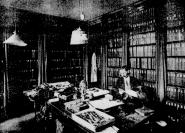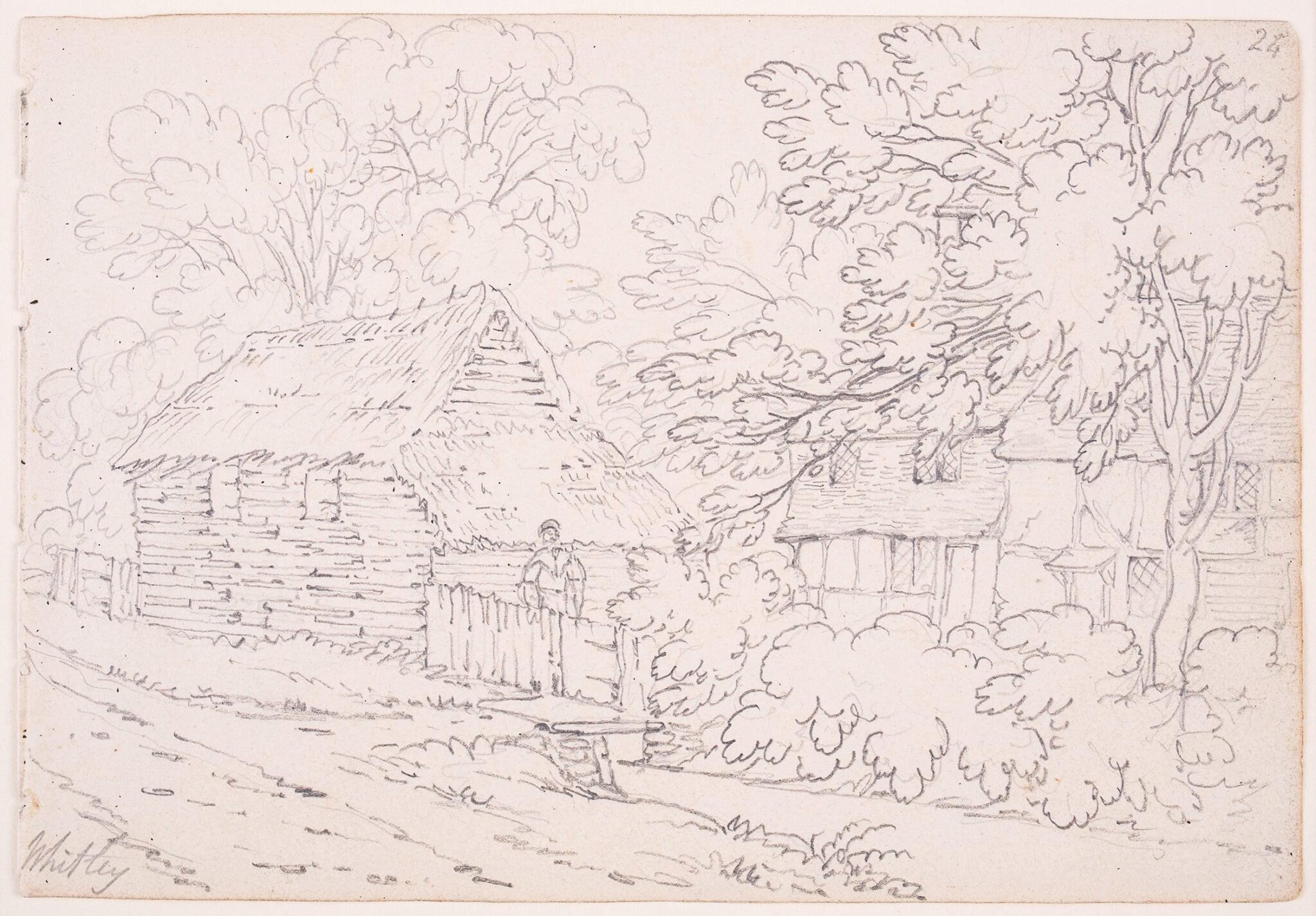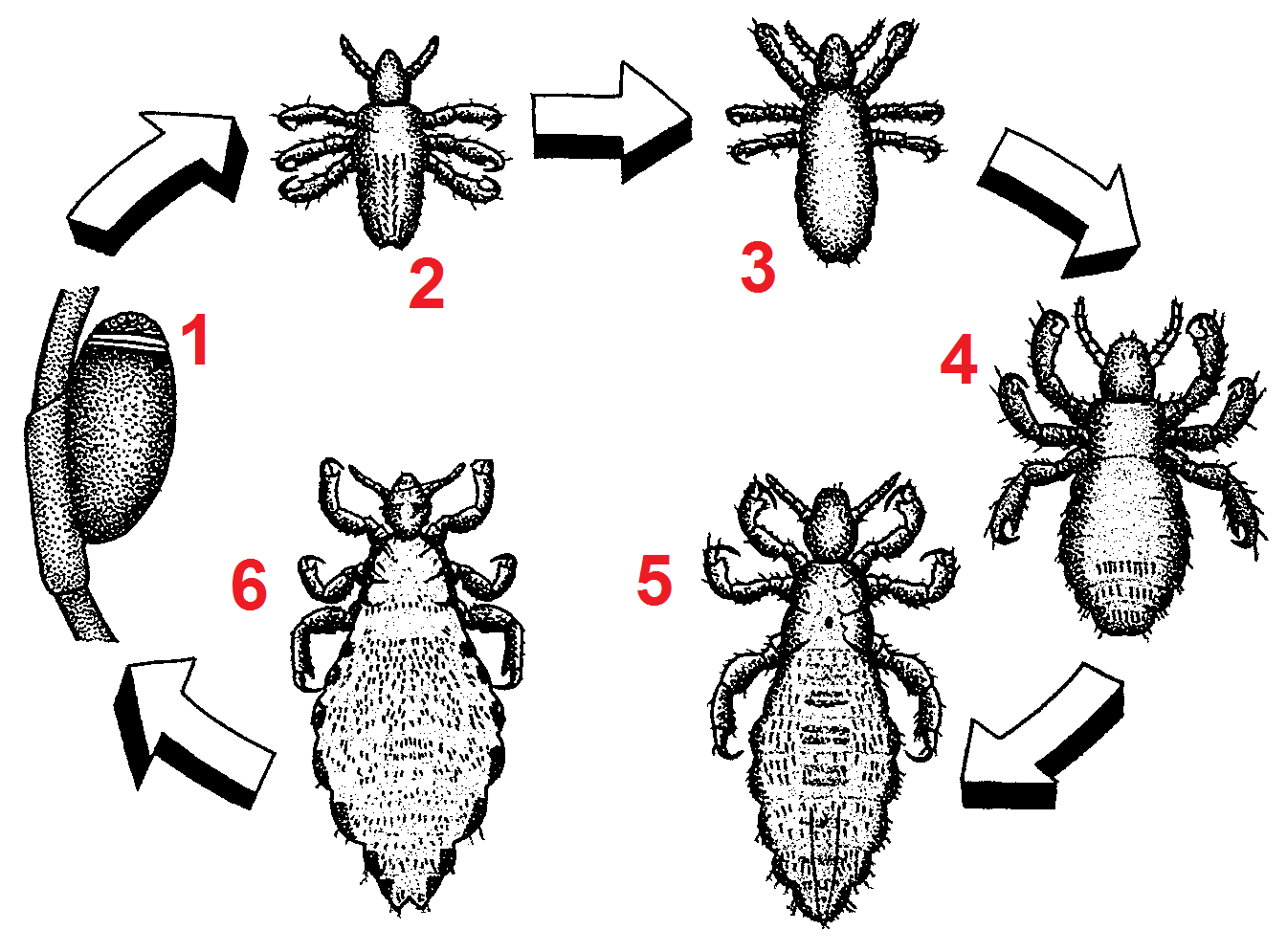|
George Talbot (entomologist)
George Talbot FES (26 October 1882 – 13 April 1952) was an English entomologist who specialised in butterflies. He wrote about 150 scientific papers, the majority being primarily systematic, consisting of the description of new species or the revision of various genera. He was also responsible for the curation and preservation of the Joicey collection of Lepidoptera prior to its accession by the Natural History Museum. Life and career George Talbot was born "in rather humble circumstances" in Croydon, Surrey, in 1882. As a young man, he was assistant to Percy Ireland Lathy. He then curated for the wealthy amateur butterfly collector Herbert Adams, followed by the insect dealer William Frederick Henry Rosenberg. During the First World War he worked with Arthur Bacot at the Lister Institute on trench fever and typhus diseases carried by lice. From 1915, he was head curator of the large and increasing collection of amateur lepidopterist James John Joicey at the Hill Museu ... [...More Info...] [...Related Items...] OR: [Wikipedia] [Google] [Baidu] |
Royal Entomological Society
The Royal Entomological Society is devoted to the study of insects. Its aims are to disseminate information about insects and improving communication between entomologists. The society was founded in 1833 as the Entomological Society of London. It had many antecedents beginning as the Society of Entomologists of London. History The foundation of the society began with a meeting of "gentlemen and friends of entomological science", held on 3 May 1833 in the British Museum convened by Nicholas Aylward Vigors with the presidency of John George Children. Those present were the Reverend Frederick William Hope, Cardale Babington, William Yarrell, John Edward Gray, James Francis Stephens, Thomas Horsfield, George Thomas Rudd and George Robert Gray. Letters of Adrian Hardy Haworth, George Bennett and John Curtis were read where they expressed their regrets to be unable to attend the meeting. They decided that a society should be created for the promotion of the science of entomology ... [...More Info...] [...Related Items...] OR: [Wikipedia] [Google] [Baidu] |
William Frederick Henry Rosenberg
William Frederick Henry Rosenberg (1868–1957) was an English ornithologist and entomologist. His first expedition was to Colombia in 1894 where he collected insects and birds. The bird collection was acquired by Adolphe Boucard. In 1896 he went to Ecuador and later returned to Colombia collecting especially for Walter Rothschild. From 1898 until 1899 he employed collectors in South America who provided him with bird skins for Rothschild. Duplicates went to the British Museum, surplus specimens were sold to other collectors and museums . He started a business as a natural history dealer in Tring in 1897 and in 1898 he moved the dealership to 57 Haverstock Hill, London. He sold specimens from Africa as well as S. America. New species were described by Ernst Hartert. Rosenberg was a Fellow of the Royal Entomological Society of London The Royal Entomological Society is devoted to the study of insects. Its aims are to disseminate information about insects and improving commu ... [...More Info...] [...Related Items...] OR: [Wikipedia] [Google] [Baidu] |
Oxford
Oxford () is a city in England. It is the county town and only city of Oxfordshire. In 2020, its population was estimated at 151,584. It is north-west of London, south-east of Birmingham and north-east of Bristol. The city is home to the University of Oxford, the oldest university in the English-speaking world; it has buildings in every style of English architecture since late Anglo-Saxon. Oxford's industries include motor manufacturing, education, publishing, information technology and science. History The history of Oxford in England dates back to its original settlement in the Saxon period. Originally of strategic significance due to its controlling location on the upper reaches of the River Thames at its junction with the River Cherwell, the town grew in national importance during the early Norman period, and in the late 12th century became home to the fledgling University of Oxford. The city was besieged during The Anarchy in 1142. The university rose to dom ... [...More Info...] [...Related Items...] OR: [Wikipedia] [Google] [Baidu] |
Oxford University Museum Of Natural History
The Oxford University Museum of Natural History, sometimes known simply as the Oxford University Museum or OUMNH, is a museum displaying many of the University of Oxford's natural history specimens, located on Parks Road in Oxford, England. It also contains a lecture theatre which is used by the university's chemistry, zoology and mathematics departments. The museum provides the only public access into the adjoining Pitt Rivers Museum. History The university's Honour School of Natural Science started in 1850, but the facilities for teaching were scattered around the city of Oxford in the various colleges. The university's collection of anatomical and natural history specimens were similarly spread around the city. Regius Professor of Medicine, Sir Henry Acland, initiated the construction of the museum between 1855 and 1860, to bring together all the aspects of science around a central display area. In 1858, Acland gave a lecture on the museum, setting forth the reason for the b ... [...More Info...] [...Related Items...] OR: [Wikipedia] [Google] [Baidu] |
Royal Army Medical Corps
The Royal Army Medical Corps (RAMC) is a specialist corps in the British Army which provides medical services to all Army personnel and their families, in war and in peace. The RAMC, the Royal Army Veterinary Corps, the Royal Army Dental Corps and Queen Alexandra's Royal Army Nursing Corps form the Army Medical Services. History Origins Medical services in the British armed services date from the formation of the Standing Regular Army after the Restoration of Charles II in 1660. Prior to this, from as early as the 13th century there are records of surgeons and physicians being appointed by the English army to attend in times of war; but this was the first time a career was provided for a Medical Officer (MO), both in peacetime and in war. For much of the next two hundred years, army medical provision was mostly arranged on a regimental basis, with each battalion arranging its own hospital facilities and medical supplies. An element of oversight was provided by the appointment ... [...More Info...] [...Related Items...] OR: [Wikipedia] [Google] [Baidu] |
Royal Pioneer Corps
The Royal Pioneer Corps was a British Army combatant corps used for light engineering tasks. It was formed in 1939, and amalgamated into the Royal Logistic Corps in 1993. Pioneer units performed a wide variety of tasks in all theatres of war, including full infantry, mine clearance, guarding bases, laying prefabricated track on beaches, and effecting various logistical operations. With the Royal Engineers they constructed airfields and roads and erected bridges; they constructed the Mulberry Harbour and laid the Pipe Line Under the Ocean (PLUTO). Predecessors The first record of pioneers in a British army goes back to 1346 at Calais where the pay and muster rolls of the English Garrison show pay records for pioneers. Traditionally, there was a designated pioneer for each company in a regiment; these were the ancestors of the current assault pioneers. In about 1750, it was proposed that a Corps of Pioneers be formed. Nothing came of this for nearly one hundred years, until the Ar ... [...More Info...] [...Related Items...] OR: [Wikipedia] [Google] [Baidu] |
Edward Bagnall Poulton
Sir Edward Bagnall Poulton, FRS HFRSE FLS (27 January 1856 – 20 November 1943) was a British evolutionary biologist, a lifelong advocate of natural selection through a period in which many scientists such as Reginald Punnett doubted its importance. He invented the term sympatric for evolution of species in the same place, and in his book ''The Colours of Animals'' (1890) was the first to recognise frequency-dependent selection. Poulton is also remembered for his pioneering work on animal coloration. He is credited with inventing the term aposematism for warning coloration, as well as for his experiments on 'protective coloration' (camouflage). Poulton became Hope Professor of Zoology at the University of Oxford in 1893. Life Edward Poulton was born in Reading, Berkshire on 27 January 1856 the son of the architect William Ford Poulton and his wife, Georgina Sabrina Bagnall. He was educated at Oakley House School in Reading. Between 1873 and 1876, Poulton studied at Jesu ... [...More Info...] [...Related Items...] OR: [Wikipedia] [Google] [Baidu] |
University Of Oxford
, mottoeng = The Lord is my light , established = , endowment = £6.1 billion (including colleges) (2019) , budget = £2.145 billion (2019–20) , chancellor = The Lord Patten of Barnes , vice_chancellor = Louise Richardson , students = 24,515 (2019) , undergrad = 11,955 , postgrad = 12,010 , other = 541 (2017) , city = Oxford , country = England , coordinates = , campus_type = University town , athletics_affiliations = Blue (university sport) , logo_size = 250px , website = , logo = University of Oxford.svg , colours = Oxford Blue , faculty = 6,995 (2020) , academic_affiliations = , The University of Oxford is a collegiate research university in Oxf ... [...More Info...] [...Related Items...] OR: [Wikipedia] [Google] [Baidu] |
Witley
Witley is a village and civil parish in the Borough of Waverley in Surrey, England centred south west of the town of Godalming and southwest of Guildford. The land is a mixture of rural (ranging from woodland protected by the Surrey Hills AONB including a small part of the forested Greensand Ridge to cultivated fields) contrasting with elements more closely resembling a suburban satellite village. As a civil parish it is unusual in that it includes the small town of Milford in the north. Occupying its hills in the south-west are Sandhills and Brook. Witley Common is a wide expanse of land, owned by the National Trust, crossed by the A3 road. The village is served by two stations on the Portsmouth Direct Line: Witley station, to the south in nearby Wormley, and, to the north, Milford station, which is more or less equidistant between Milford and Witley. Its church dates to the pre-Norman Conquest period of the Kingdom of England. The village has the private sector, bu ... [...More Info...] [...Related Items...] OR: [Wikipedia] [Google] [Baidu] |
Body Louse
The body louse (''Pediculus humanus humanus'', also known as ''Pediculus humanus corporis'') is a hematophagic ectoparasite louse that infests humans. It is one of three lice which infest humans, the other two being the head louse, and the crab louse or pubic louse. Despite the name, body lice do not directly live on the host. They lay their eggs on fibres of clothing and only come into contact with the host whenever they need to feed. Since body lice cannot jump or fly, they spread by direct contact with another person or more rarely by contact with clothing or bed sheets that are infested. Body lice are disease vectors and can transmit pathogens that cause human diseases such as epidemic typhus, trench fever, and relapsing fever. In developed countries, infestations are only a problem in areas of poverty where there is poor body hygiene, crowded living conditions, and a lack of access to clean clothing. Outbreaks can also occur in situations where large groups of people a ... [...More Info...] [...Related Items...] OR: [Wikipedia] [Google] [Baidu] |
Typhus
Typhus, also known as typhus fever, is a group of infectious diseases that include epidemic typhus, scrub typhus, and murine typhus. Common symptoms include fever, headache, and a rash. Typically these begin one to two weeks after exposure. The diseases are caused by specific types of bacterial infection. Epidemic typhus is due to ''Rickettsia prowazekii'' spread by body lice, scrub typhus is due to ''Orientia tsutsugamushi'' spread by chiggers, and murine typhus is due to ''Rickettsia typhi'' spread by fleas. Vaccines have been developed, but none are commercially available. Prevention is achieved by reducing exposure to the organisms that spread the disease. Treatment is with the antibiotic doxycycline. Epidemic typhus generally occurs in outbreaks when poor sanitary conditions and crowding are present. While once common, it is now rare. Scrub typhus occurs in Southeast Asia, Japan, and northern Australia. Murine typhus occurs in tropical and subtropical areas of the worl ... [...More Info...] [...Related Items...] OR: [Wikipedia] [Google] [Baidu] |
Trench Fever
Trench fever (also known as "five-day fever", "quintan fever" ( la, febris quintana), and "urban trench fever") is a moderately serious disease transmitted by body lice. It infected armies in Flanders, France, Poland, Galicia, Italy, Salonika, Macedonia, Mesopotamia, Russia and Egypt in World War I. Three noted cases during WWI were the authors J. R. R. Tolkien, A. A. Milne, and C. S. Lewis. From 1915 to 1918 between one-fifth and one-third of all British troops reported ill had trench fever while about one-fifth of ill German and Austrian troops had the disease. The disease persists among the homeless. Outbreaks have been documented, for example, in Seattle and Baltimore in the United States among injection drug users and in Marseille, France, and Burundi. Trench fever is also called Wolhynia fever, shin bone fever, Meuse fever, His disease, and His–Werner disease or Werner-His disease (after Wilhelm His Jr. and Heinrich Werner). The disease is cau ... [...More Info...] [...Related Items...] OR: [Wikipedia] [Google] [Baidu] |





.jpg)


